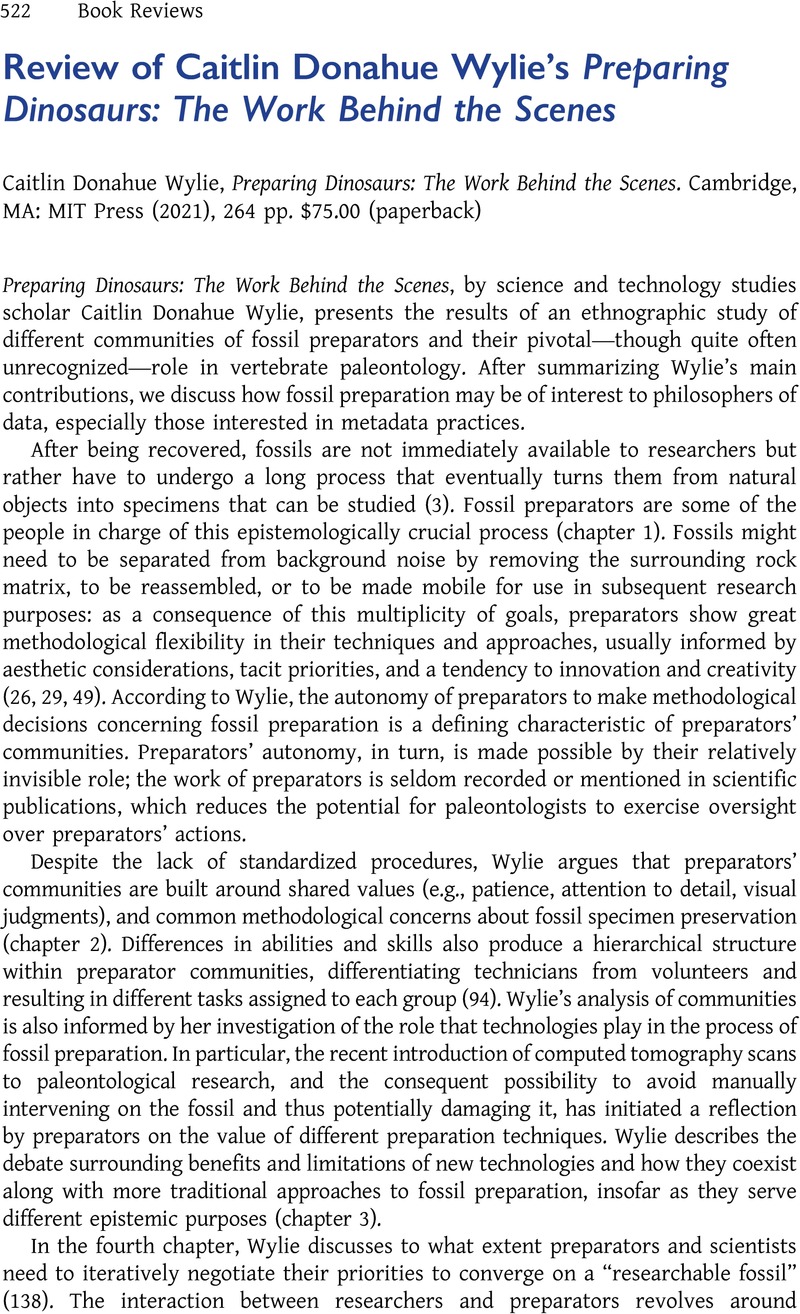No CrossRef data available.
Article contents
Review of Caitlin Donahue Wylie’s Preparing Dinosaurs: The Work Behind the Scenes - Caitlin Donahue Wylie, Preparing Dinosaurs: The Work Behind the Scenes. Cambridge, MA: MIT Press (2021), 264 pp. $75.00 (paperback)
Review products
Caitlin Donahue Wylie, Preparing Dinosaurs: The Work Behind the Scenes. Cambridge, MA: MIT Press (2021), 264 pp. $75.00 (paperback)
Published online by Cambridge University Press: 20 June 2023
Abstract
An abstract is not available for this content so a preview has been provided. Please use the Get access link above for information on how to access this content.

- Type
- Book Review
- Information
- Copyright
- © The Author(s), 2023. Published by Cambridge University Press on behalf of the Philosophy of Science Association
References
Bokulich, Alisa. 2021. “Using Models to Correct Data: Paleodiversity and the Fossil Record.” Synthese 198:5919–40.CrossRefGoogle Scholar
Boyd, Nora Mills. 2018. “Evidence Enriched.” Philosophy of Science 85 (3):403–21.CrossRefGoogle Scholar
Currie, Adrian. 2023. “Cleaning, Sculpting or Preparing? Scientific Knowledge in Caitlin Wylie’s Preparing Dinosaurs
.” Biology and Philosophy 38 (2):10.CrossRefGoogle Scholar
Leonelli, Sabina. 2018. “The Time of Data: Timescales of Data Use in the Life Sciences.” Philosophy of Science 85 (5):741–54.CrossRefGoogle Scholar
Rieppel, Lukas. 2019. Assembling the Dinosaur: Fossil Hunters, Tycoons, and the Making of a Spectacle. Cambridge, MA: Harvard University Press.CrossRefGoogle Scholar
Star, Susan Leigh, and Strauss, Anselm. 1999. “Layers of Silence, Arenas of Voice: The Ecology of Visible and Invisible Work.” Computer Supported Cooperative Work 8 (1):9–30.CrossRefGoogle Scholar
Wylie, Caitlin Donahue. 2019. “Overcoming the Underdetermination of Specimens.” Biology and Philosophy 34 (2):24.CrossRefGoogle Scholar


